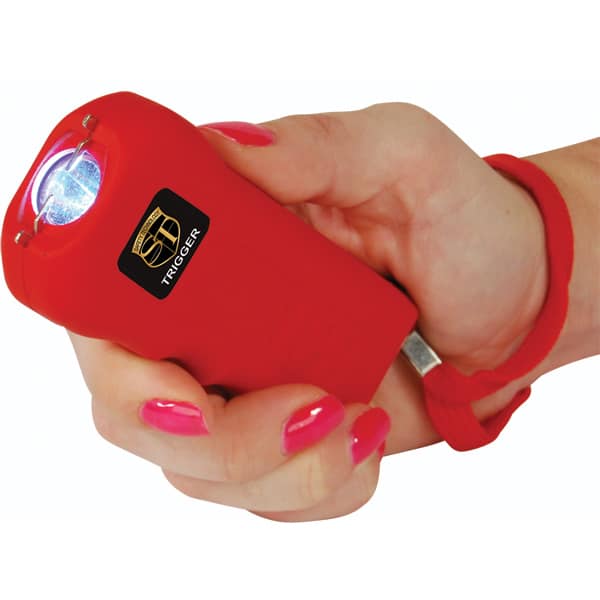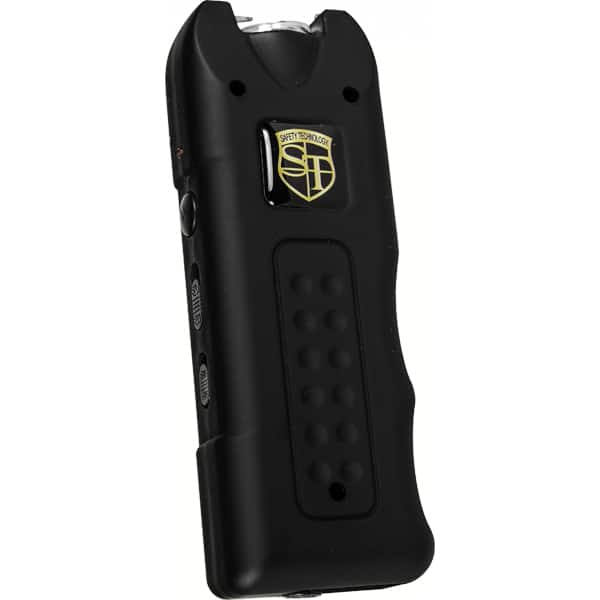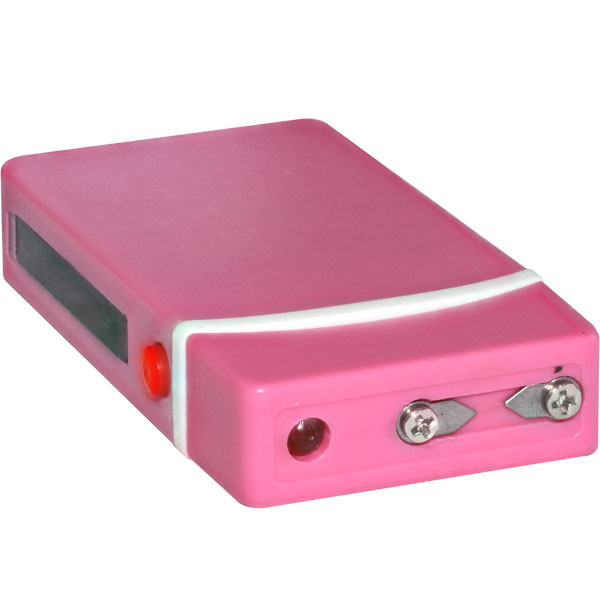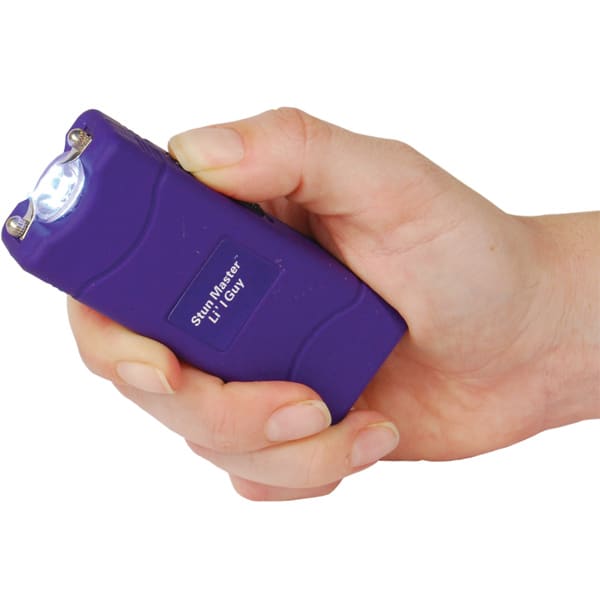
Curious about the history and evolution of stun guns? From their humble beginnings in the 1930s to their widespread use today, stun guns have come a long way in providing individuals with a non-lethal means of self-defense.
Learn about the fascinating world of stun guns, exploring their origins and differences from tasers, debunking common myths, and the importance of proper training in using this valuable self-defense tool.

Stun guns, also known as Conducted Electrical Weapons (CEWs), were first developed in the 1930s by Jack Cover, a NASA researcher. Cover wanted to create a non-lethal weapon that could help law enforcement officers subdue suspects without causing permanent harm.
The first commercially available electroshock weapon, the Taser, was introduced in the 1970s and became popular among law enforcement agencies as an alternative to firearms. Throughout the years, stun guns have advanced in technology and design, with features like built-in safety measures and rechargeable batteries.
Today, stun guns are widely used by law enforcement officers, security personnel, and civilians for self-defense.
Stun guns and tasers are often confused in conversation, but they’re actually two different self-defense tools with unique working methods.
Stun guns are handheld gadgets that give off a high-voltage, low-amperage shock when pressed against an attacker’s body. This shock messes with the attacker’s nervous system, causing pain and muscle contractions that can briefly disable them. Stun guns need direct contact with the target to work and don’t shoot projectiles or deliver a long-distance shock.

On the flip side, tasers are electroshock weapons that use compressed nitrogen to fire two small dart-like electrodes attached to wires. These electrodes pierce through the target’s clothing and release an electrical shock that interferes with the target’s neuromuscular system. Tasers have a longer reach than stun guns, typically up to 15 feet, allowing the user to disable an attacker from a safer distance.
Furthermore, tasers can be used in both contact and probe modes, offering versatility in self-defense situations. Despite their variations, both stun guns and tasers are non-lethal weapons made to give people a way to defend themselves without causing lasting harm. A cool fact is that the first stun gun was created in the 1930s by a New York inventor named Jack Cover, who named it the ‘TASER’ after a beloved childhood book character.
| Criteria | Stun Guns | Tasers |
|---|---|---|
| Working Method | High-voltage, low-amperage shock on contact | Dart-like electrodes fired to deliver electrical shock |
| Range | Requires direct contact with target | Typically up to 15 feet reach |
| Modes of Use | Contact only | Contact and probe modes |
| Purpose | Cause pain and muscle contractions | Interfere with neuromuscular system to disable attacker |
| Lethality | Non-lethal | Non-lethal |

Stun guns are often misunderstood as lethal weapons, but in reality, they are designed to incapacitate rather than kill. Stun guns deliver an electric shock that disrupts the body’s neuromuscular system, causing temporary immobility and disorientation.
While the effects can be painful and intense, stun guns are considered non-lethal self-defense tools when used appropriately. Unlike firearms or other deadly weapons, stun guns are designed to provide a means of defense without causing permanent harm or fatal injuries.
Users must understand how to properly use stun guns to effectively protect themselves without escalating a situation to a lethal level.
Stun guns temporarily disable a person by giving them a non-lethal electric shock. One of the main advantages of stun guns is that they usually do not cause serious long-term injuries. When someone gets shocked, they might feel pain and experience temporary muscle contractions, burns, or minor skin irritation, but these effects usually go away quickly once the shock stops.
Unlike guns or other weapons that can cause severe harm or even death, stun guns are generally seen as a safer option for self-defense. Remember, it’s crucial to use stun guns responsibly and follow local laws to reduce the chances of getting hurt.
Stun guns offer an effective and non-lethal way for individuals to defend themselves against potential threats.
When someone comes into contact with this self-defense tool, it delivers a high-voltage electrical shock to the attacker, temporarily incapacitating them and allowing the victim to get away from danger. Stun guns are especially helpful for those who might not be comfortable carrying a firearm or other traditional weapons, as they are simple to use and don’t require special training.

One of the main benefits of stun guns is their ability to incapacitate an attacker without causing lasting harm, making them a safer choice for self-defense compared to lethal weapons. The electrical shock from a stun gun disrupts the attacker’s nervous system, leading to muscle contractions and disorientation, giving the victim time to escape and get help.
Additionally, stun guns are small and easy to hide, making them a practical and convenient option for those wanting to boost their personal safety. In general, stun guns provide a dependable and effective way for individuals to protect themselves non-lethally.
When learning how to use a stun gun, it’s crucial to ensure the safety and proper usage of this self-defense tool. Start by getting familiar with the stun gun’s features and functions, such as how to arm and disarm it. Practice holding it with a secure grip to avoid accidental discharge.
Learn about the best target areas on the body for maximum effectiveness and self-defense. Always prioritize safety, follow local laws, and seek professional guidance when needed. With regular practice and training, you can effectively use a stun gun for personal protection.

Stun guns are often perceived as expensive due to their effectiveness and technology, however, this is just a myth. There are a wide range of stun guns available on the market at various price points, making them accessible to a wide range of budgets.
Prices can vary depending on factors such as brand, features, and quality, but most are very affordable for those looking to purchase a stun gun for personal protection. It is important to research and compare prices to find a stun gun that fits your budget and meets your needs.
A stun gun is a self-defense device that delivers an electric shock to incapacitate an attacker temporarily.
Travel regulations regarding stun guns vary depending on the country or state you are traveling to. It is important to research and understand the laws and regulations of your destination regarding the possession and transportation of stun guns.
Stun guns are considered safe for most people when used properly. However, they should not be used on individuals with certain medical conditions, such as heart problems or epilepsy.
Pepper Spray Wholesale provides non-lethal self defense products and hidden cameras for you, your loved ones and your home. If you have any questions about the products, do not hesitate to Contact Us. Stay Safe!
Pepper Spray Wholesale
1867 Caravan Trail
Ste 105
Jacksonville, FL 32216
Call us toll free: (800) 859-5566